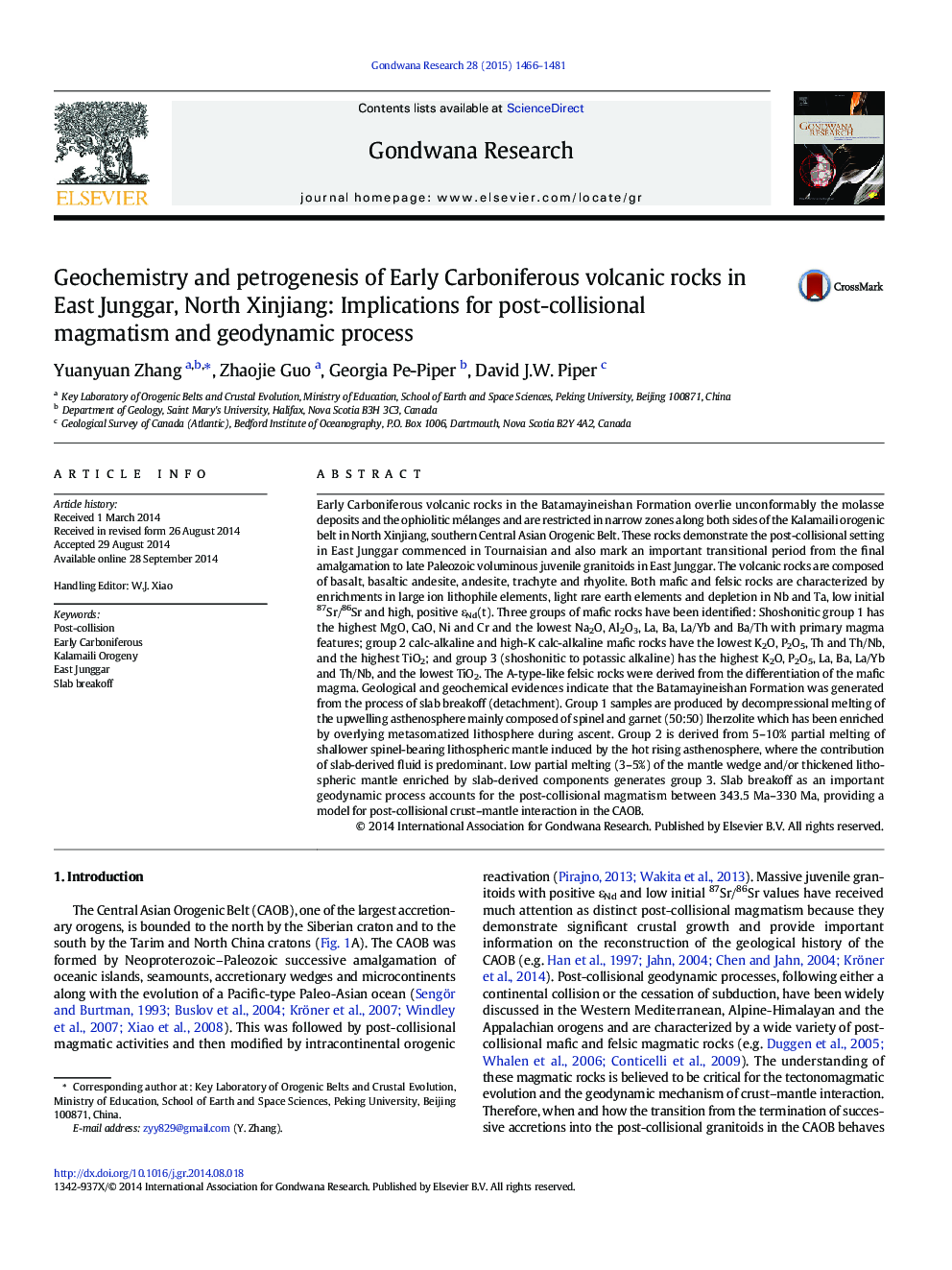| کد مقاله | کد نشریه | سال انتشار | مقاله انگلیسی | نسخه تمام متن |
|---|---|---|---|---|
| 4726702 | 1356343 | 2015 | 16 صفحه PDF | دانلود رایگان |

• Early Carboniferous volcanic rocks in the Kalamaili orogen are post-collisional.
• Post-collisional setting started in Tournaisian in East Junggar.
• Slab breakoff at 345‒330 Ma was the geodynamic process producing volcanism.
• 3 groups of mafic rocks from calc-alkaline to potassic alkaline are interpreted.
Early Carboniferous volcanic rocks in the Batamayineishan Formation overlie unconformably the molasse deposits and the ophiolitic mélanges and are restricted in narrow zones along both sides of the Kalamaili orogenic belt in North Xinjiang, southern Central Asian Orogenic Belt. These rocks demonstrate the post-collisional setting in East Junggar commenced in Tournaisian and also mark an important transitional period from the final amalgamation to late Paleozoic voluminous juvenile granitoids in East Junggar. The volcanic rocks are composed of basalt, basaltic andesite, andesite, trachyte and rhyolite. Both mafic and felsic rocks are characterized by enrichments in large ion lithophile elements, light rare earth elements and depletion in Nb and Ta, low initial 87Sr/86Sr and high, positive ɛNd(t). Three groups of mafic rocks have been identified: Shoshonitic group 1 has the highest MgO, CaO, Ni and Cr and the lowest Na2O, Al2O3, La, Ba, La/Yb and Ba/Th with primary magma features; group 2 calc-alkaline and high-K calc-alkaline mafic rocks have the lowest K2O, P2O5, Th and Th/Nb, and the highest TiO2; and group 3 (shoshonitic to potassic alkaline) has the highest K2O, P2O5, La, Ba, La/Yb and Th/Nb, and the lowest TiO2. The A-type-like felsic rocks were derived from the differentiation of the mafic magma. Geological and geochemical evidences indicate that the Batamayineishan Formation was generated from the process of slab breakoff (detachment). Group 1 samples are produced by decompressional melting of the upwelling asthenosphere mainly composed of spinel and garnet (50:50) lherzolite which has been enriched by overlying metasomatized lithosphere during ascent. Group 2 is derived from 5–10% partial melting of shallower spinel-bearing lithospheric mantle induced by the hot rising asthenosphere, where the contribution of slab-derived fluid is predominant. Low partial melting (3–5%) of the mantle wedge and/or thickened lithospheric mantle enriched by slab-derived components generates group 3. Slab breakoff as an important geodynamic process accounts for the post-collisional magmatism between 343.5 Ma–330 Ma, providing a model for post-collisional crust–mantle interaction in the CAOB.
Figure optionsDownload as PowerPoint slide
Journal: Gondwana Research - Volume 28, Issue 4, December 2015, Pages 1466–1481